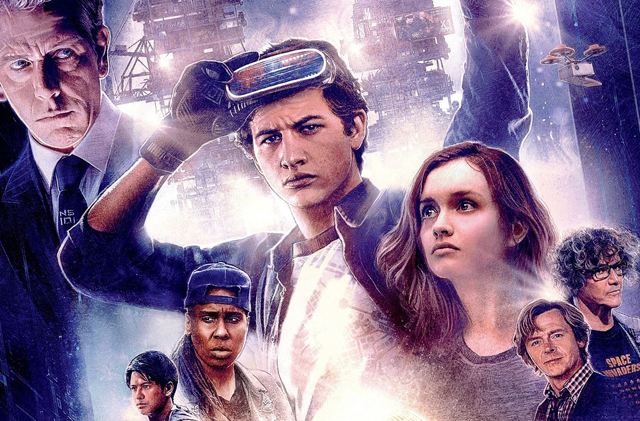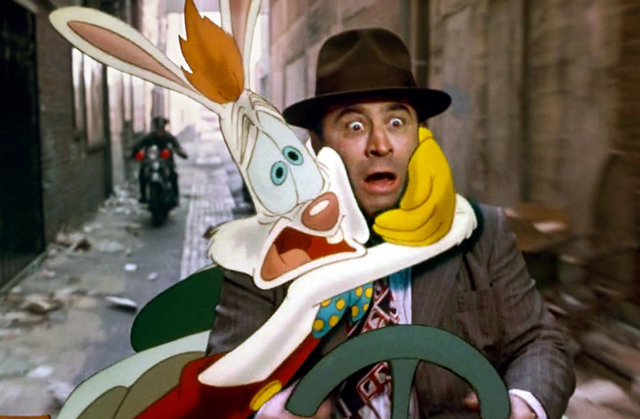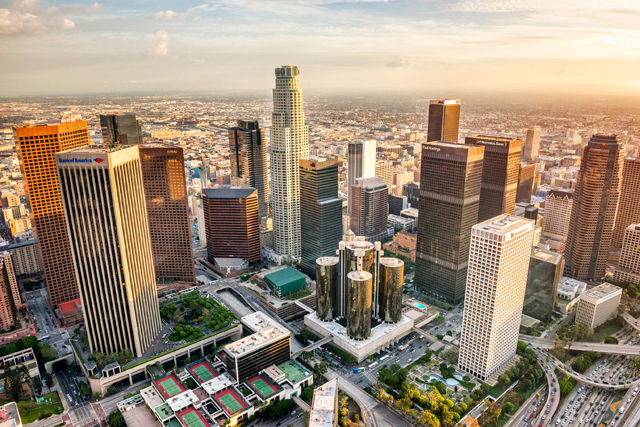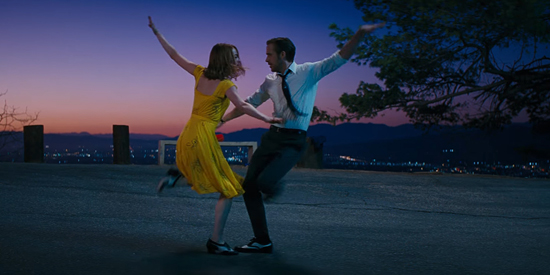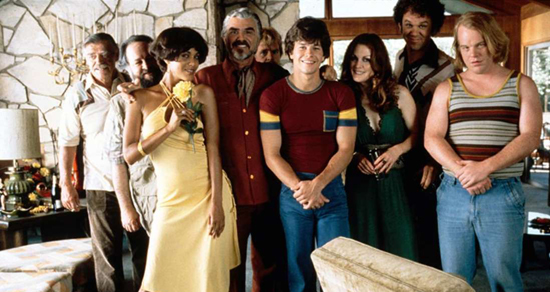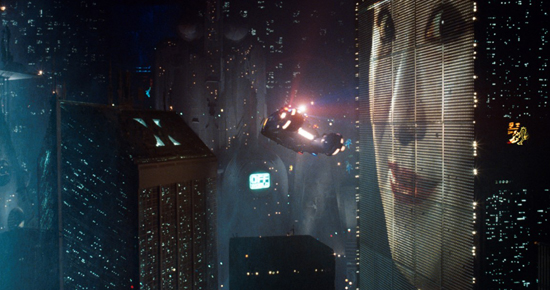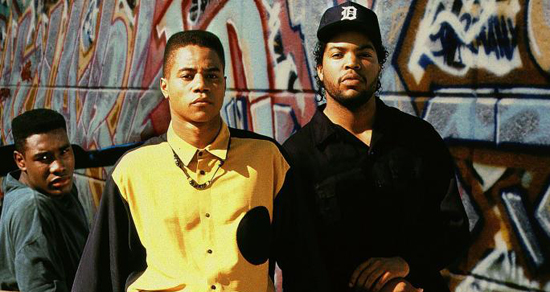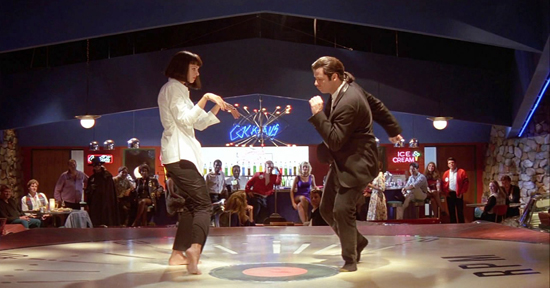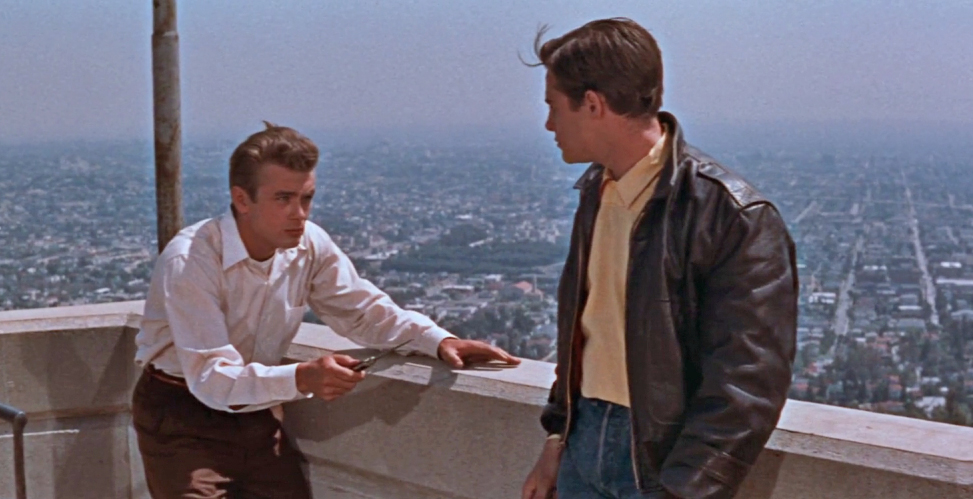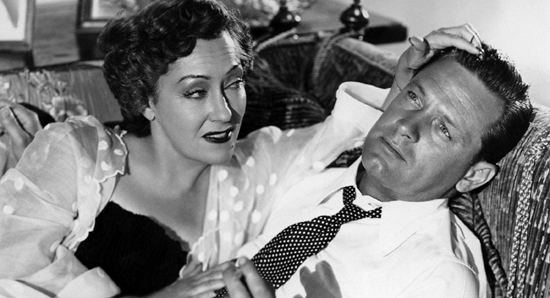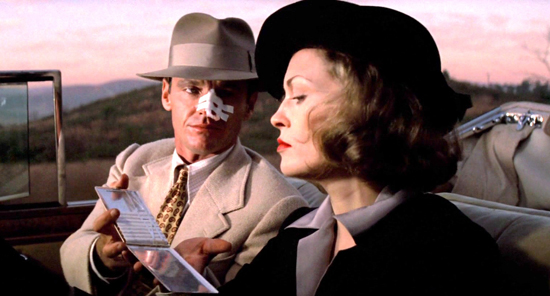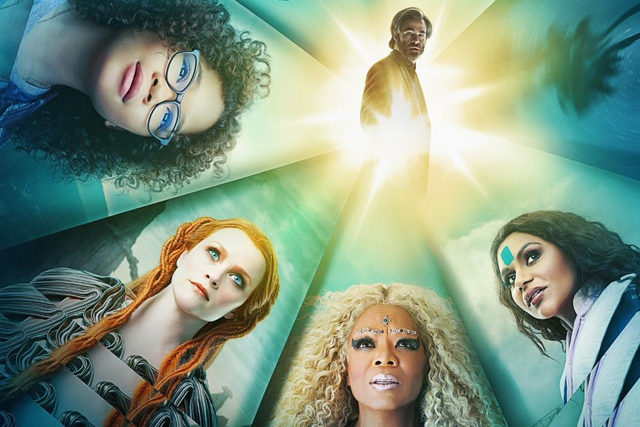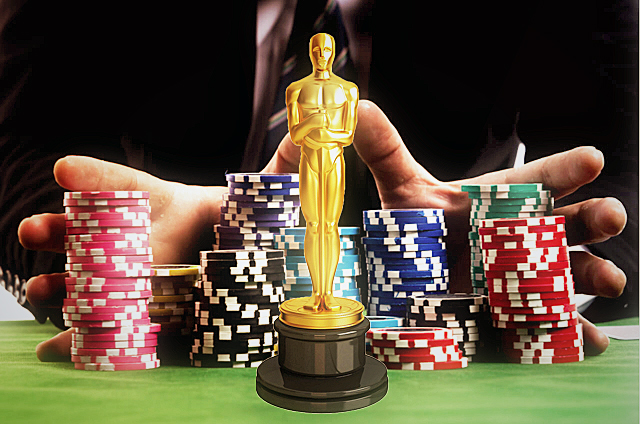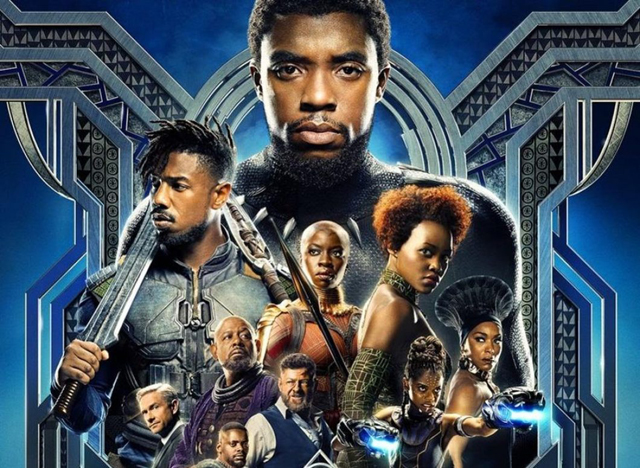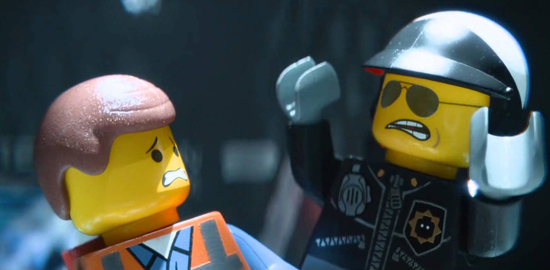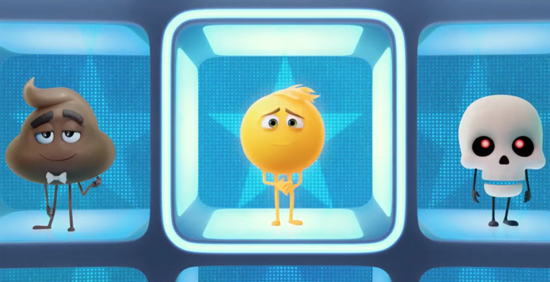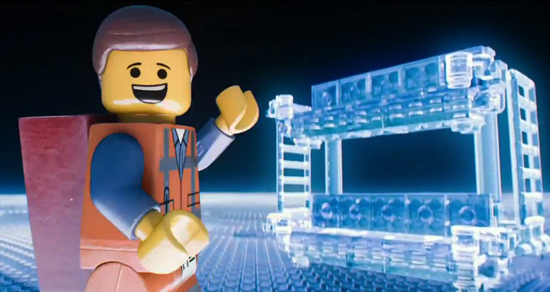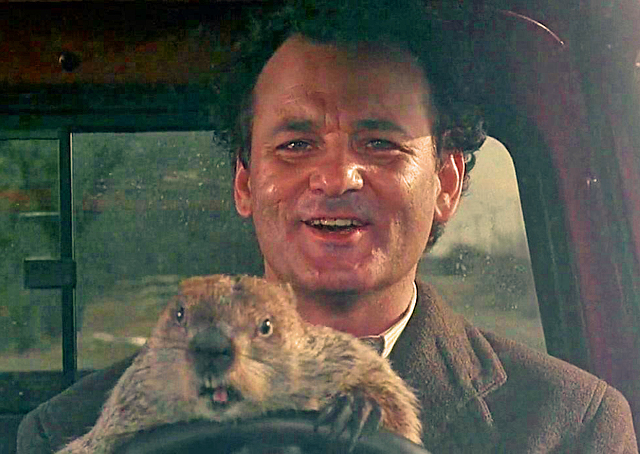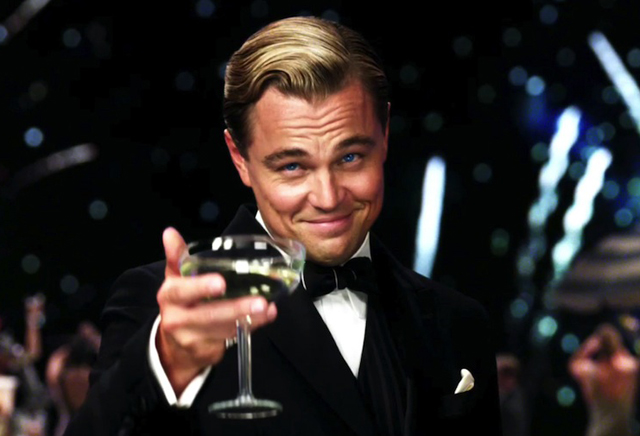
There are few other directors out there who can create such a divided opinion of his work than Baz Luhrmann. The Aussie auteur either receives enormous praise for his lavishly made films, or is savaged by critics for his often indulgent tastes. There is very little ground in between on most of his movies, and surprisingly enough those same critics directed at one of his films may end up switching allegiance on their stance towards the director based on the next film. I think the strong feelings that Baz elicits from critics and viewers are due to the fact that he has an uncompromising style, which is certainly unique and all his own, but is also an acquired taste. Starting off with his debut in the lavish Strictly Ballroom (1992), Baz has gone on to refine a style that emphasizes bold colors, quick paced editing, and an often operatic form of storytelling. And when he uses his distinct style, it’s often used to challenge cinematic conventions by working it’s way into unexpected genres. He re-imagined Shakespeare by putting a modern twist on Romeo + Juliet (1996), which was irksome to some Bard purists. He also tried and failed to make a sweeping romantic epic centered around his homeland in Australia (2008). However, his most highly regarded film, Moulin Rouge! (2001), is largely seen as the movie that revitalized the dormant movie musical genre, so while he may be divisive he at the same time has also proved to be highly influential. I myself am mixed on his effectiveness as a filmmaker. While I absolutely loathed Australia, as I wrote in my scathing critique here, I do admire his bold visual style, especially in his earlier work like Strictly Ballroom and Romeo + Juliet (Moulin Rouge was borderline in my opinion). But after the failure of Australia, Baz needed something to prove that he could balance style with substance again, and once again he made a bold choice in tackling a beloved literary classic; F. Scott Fitzgerald’s The Great Gatsby.
Gatsby is not only a cherished classic in literary circles, but can also make a case for being the “Great American Novel,” taking that distinction away from the likes of Mark Twain’s Huckleberry Finn, Herman Melville’s Moby Dick, or Nathaniel Hawthorne’s The Scarlett Letter. Published in 1925, Fitzgerald’s novel is a snapshot of America in the Roaring Twenties, chronicling the decadence and greed that consumed the country at the time and dissecting the essence of the American dream that both drove the nation forward and also caused it to crack apart at the same time. Fitzgerald drew heavily from his own experiences, having attended many lavish parties put on by the social elites of his day, and in particular, captured in his writing the types of characters that he would meet in many interactions. Though Fitzgerald certainly observes the cultural awakening of the 20’s with an air of admiration, he casts a critical eye (through a quite literal metaphor even) on the class divisions that also define the era. It’s a novel about dreaming, but also about the limitations of dreams, and it ultimately concludes on a very sour tragic note. The bleakness of Fitzgerald’s Gatsby is largely what made the book a failure in it’s initial release, because nobody who was enjoying the decadence of the Jazz Age was interested in seeing the downside to all their fun. Of course, the Depression Era that followed changed a few minds, and now The Great Gatsby is regarded as a masterpiece. It is now considered essential reading for nearly all American school curriculum, because of it’s distinctly American themes and the way that it dissects the social issues and divisions that still resonate in modern society. Though F. Scott Fitzgerald was disheartened by the lack of appreciation that his work received in it’s time, and also dying at the young age of 44 believing that his writing was lost to era, he may be appreciative of the fact that Gatsby’s legacy endures to this day; even when given up to new interpretations like the one in Baz Luhrmann’s film.

“In my younger and more vulnerable years, my father gave me some advice. ‘Always try to see the best in people,’ he would say. As a consequence, i’m inclined to reserve judgement. But even I have a limit.”
One big difference that can be derived between the book and the movie is the intent of each. What F. Scott Fitzgerald envisioned as an examination of the world that he lived in, Luhrmann sees as a canvas for his lavish production design. Baz is clearly fascinated with the era of the Roaring Twenties, and all the visual splendor that can be drawn from it; the fashion, the opulent art deco architecture, and even the striking contrasts between the have and have nots of the era. In The Great Gatsby movie, Baz wants to play around in this era and use his film-making talents to do it. The movie does take advantage of the many lavish parties that Fitzgerald describes in his book, and films them with the same over the top vigor that he brought to Moulin Rogue 12 years prior to this production. The quick editing and glitzy cinematography make a return here, but the movie doesn’t stop there with the modern aesthetics added to this classic narrative. The movie also adds a hip hop flavored soundtrack, with music that is quite obviously anachronistic to the era, although in some cases inspired. It’s certainly a jarring thing to hear the rapping of Jay-Z (who also served as the film’s executive producer) butting up against the likes of Cole Porter. But, it’s part of the clashing of cultural elements that defines a lot of Luhrmann’s style. But even with all the cinematic flair that he adds to delight the eyes of the viewer, is it really possible for this Aussie director to capture the essence of this quintessential American story. Surprisingly, he does, albeit with a few less than successful elements. Though I despised Australia, I actually found that I had more positive feelings towards The Great Gatsby, which strangely feels more natural to the director’s sensibilities than the love letter to his home country. And while I don’t think that Fitzgerald ever imagined the same kind of story that Luhrmann tells in his movie, I do believe that both find common ground on a very crucial element; the character of Jay Gatsby himself.
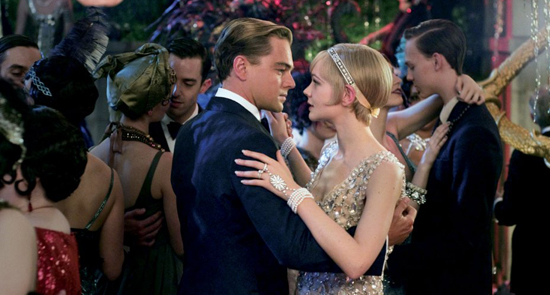
“My life, old sport, my life… my life has got to be like this. It’s got to keep going up.”
For a lot of reasons, the success of an adaptation of The Great Gatsby rests mostly on how well cast the role of the titular Gatsby is within the movie. Baz Luhrmann’s film is certainly not the first to hit the big screen, and probably won’t be the last, so there are many examples to draw comparisons with. Robert Redford famously took on the role in a 1974 version, with a screenplay adaptation by Francis Ford Coppola. And while Redford certainly looked the part of the dashing young man, he unfortunately doesn’t resonate too well because he made the biggest possible mistake with the character; he tried to make him too relate-able. The key with the character of Jay Gatsby is that he must remain unknowable; an enigma with a face that you can never quite understand. He is a man of ambition, charming as well as cunning, but apart from that, no one quite knows where he came from and how he got rich so fast. There are explanations given as to his past, but they are described by Gatsby himself, so one still is left wondering if it’s the truth. The only thing that defines the motivations of Jay Gatsby is his sole desire to be loved, and in particular, to reconnect with the one love that he let slip away; the enchanting Daisy Buchanan. Gatsby’s pursuit is the heart of the mystery behind Fitzgerald’s tale; why would one man go to such lengths just to fill this one hole in his life. That’s the soul of the character that Baz knew he had to match, and luckily he didn’t need to reach out too far. He reconnected with his old cinematic Romeo, Leonardo DiCaprio, and tasked him with bringing the character to life. DiCaprio’s performance turns out to be just perfect because he distills the character down into a man who is always in the middle of a performance. There is not an authentic bone in Gatsby’s body, and Leo brings that cadence out brilliantly. With blustery proclamations, grand gestures of showmanship, and a desire to ingratiate himself to others by greeting them as “old sport,” Gatsby comes through the screen exactly as the unknowable man that Fitzgerald imagined in his book. What the author wanted was to connect the ambition of Gatsby the Man with the limitations of the American Dream, and show that a man that has everything may still in fact lack everything. In getting a bombastic performance from a reliable actor like DiCaprio, the movie managed to find that essence.
The effectiveness of DiCaprio’s performance helps to ground the rest of the movie and makes Luhrmann’s flashiness actually serviceable as a part of the overall experience. In many ways, it reflects the reputation that the book has managed to amass over the years. A story this iconic should be given the most mythical of treatments, and Luhrmann treats The Great Gatsby with the same ethereal wonder as a grand opera. This is clear in what is absolutely my favorite moment in the movie, which is the introduction of Jay Gatsby into the film. Any other movie would have probably given Gatsby a more dignified entrance into a scene, but Baz wanted something grander. During one of the party scenes, the character of Nick Carraway (played by Tobey Maguire) is trying to navigate his way through a ruckus party at Gatsby’s mansion, hoping to catch a first glimpse of the mysterious millionaire. A one point, he crosses paths with someone who he believes to be a waiter at first, and one who remains out of sight while speaking to him on screen. Then in one magnificent shot, the mystery man turns to face the camera and says to Nick “For you see, I’m Gatsby.” The moment is then punctuated with fireworks in the background and a crescendo in the score courtesy of George Gershwin’s “Rhapsody in Blue,” all with Leonardo smiling straight at us with champagne in hand. It’s the kind of moment that only cinema can capture, and it’s the kind of moment that allows Baz Luhrmann to elevate the character of Gatsby in the most epic way possible. For this, the over the top treatment seems appropriate, because it’s thematically in tune with the excesses of the era it’s depicting and it helps to bring new life into a story that audiences are probably overly familiar with. But, despite it feeling appropriate for the time period for which it is depicting, does Baz still manage to connect us with the lessons of Fitzgerald’s tale, or does it get lost in all the director’s indulgences.
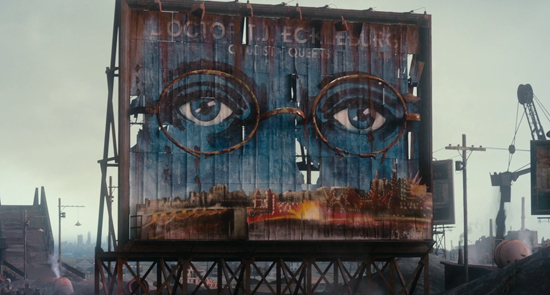
“I remember how we had all come to Gatsby’s and guessed at this corruption while he stood before us concealing an incorruptible dream…”
Though Baz Luhrmann is an expert craftsman when it comes to visualizing a story, the one thing he isn’t known for is subtlety. While a lack of subtlety can help some of his movies feel entertainingly aloof, it does however minimize the effectiveness of moments that should carry more weight. And this is where his adaptation of The Great Gatsby shows it’s cracks. In particular, while the minimal development of Gatsby’s character is appropriate for his place in the story, the same can not be said about the others. Most of the other characters are painted in very familiar tropes, which ignores the complexities that defined them in the book. They instead are turned into archetypes, which leaves little mystery as to how their characters will function throughout the rest of the story. In particular, the characters of Tom and Daisy Buchanan are short changed the most in this version of the story. Tom, in one moment in the movie, cites the controversial work of an author named Goddard, which was a thinly veiled reference to white supremacist author Lothrop Stoddard in Fitzgerald’s novel, and his book called “Rise of the Colored Empires.” In the movie, this is equivalent to having a sign over Tom’s head reading “I’m a Racist Bigot and you should hate me.” There are already many negative things to dislike about Tom Buchanan (serial infidelity for one), but this obvious connection to racist ideology is hitting it too much on the nose. Daisy is also thinly drawn, becoming little more than just the object of Gatsby’s desire, rather than the duplicitous, femme fatale that she is in the book. It’s funny that in this movie, Gatsby has more chemistry with Nick Carraway than he does with Daisy, but it makes sense since DiCaprio and Maguire have been best buds since childhood. I don’t fault the actors for these portrayals; in fact I do think Carey Mulligan and Joel Edgerton do the best they can with their roles as Daisy and Tom respectively. I especially enjoy the Clark Gable-esque cadence that Edgerton added to his performance. But it’s very clear that for these characters that Luhrmann wanted to spell things out for his audience rather than to let the characters form naturally as part of the narrative.
It sometimes extends into the thing that Baz Luhrmann s usually good at too which is his visual flourish. In the book, the most vivid and reoccurring symbol for the story is this billboard off the side of the road in the gray landscape of the Valley of Ash, where all the coal plants are. The billboard is for a long out of business optometrist, visualized as large, bespectacled eyes, faceless and plastered on a plain starry sky, which has deteriorated over the years due to lack of upkeep. In the book, these eyes metaphorically act as the Eyes of God, watching over our characters and appearing to cast judgment. It’s a powerful symbol, and one that has gone on to be the trademark image of the entire story; appearing on the cover of many reprints of the novel over the years. But, in the book, it performs purely as that; a symbol, which only gains significance through interpretation. In the movie, however, Luhrmann’s lack of subtlety does away with any pretense regarding the billboard. When a climatic vehicular manslaughter happens at the end of the second act, Luhrmann cuts right to the eyes, gazing down on the event, pretty much spelling out what was in the subtext of Fitzgerald’s writing, that these are the eyes of God, and he’s watching these foolish mortals destroy one another. It robs that symbol of it’s power in the process. There is also another strange element that Baz adds to the movie which proved to be distracting. In some parts, Baz seems to love the prose of Fitzgerald’s writing so much, that he literally puts it on screen. In place of Nick Carraway’s narration of remembrance from the novel, Luhrmann creates a framing device of Nick writing the novel out as a means of therapy, and as he writes, particular passages of the text transpose over the images of the movie itself, making you very aware of their importance. While an interesting idea, I think they too robbed the power of the words by making us too aware of their significance. In these two instances, Baz’s indulgences pull you out of the movie and reduce the effectiveness of what Fitzgerald wrote on the page. It’s not a bad thing for Baz Luhrmann to feel so strongly about the mythical qualities of The Great Gatsby, it’s just that he should have understood that it’s better to let those things speak for themselves.

“I knew it was a great mistake for a man like me to fall in love…”
Baz Luhrmann can be infuriating as a director sometimes, but you can’t help but admire the way he swings for the fences with every project in a way that few other directors do. The Great Gatsby may not be a great film in total, but it does more right than wrong, and at the very least does an honorable job of trying to bring F. Scott Fitzgerald’s novel to life. The book is almost too esteemed a piece of writing to ever get a faithful adaptation that’ll please every one. Despite it’s flaws, I seem to find this version the best that we are likely to ever get, just because of the unique spin that Baz put into it. His version of the story presents an idealized world, where the characters and the setting are larger than life, and mythic representations of the character of America. Perhaps with his outsider perspective, Baz Luhrmann found himself to be the ideal visionary to carry this story into a new century and re-contextualize a classic without loosing too much of it’s essence. That being said, some of his indulgences also do minimize the narrative a bit, and to really get a grasp of the power of this story, it’s better to go back to the original novel. I will say, The Great Gatsby is one of Baz Luhrmann’s more restrained works of film-making, and it certainly is a breath of fresh air after the mess that was Australia. It also worked out well for him in his career, as the movie became a surprise hit at the box office, which no doubt was helped by the widespread familiarity that the story continues to have. The one good thing that can come from a flashy, cinematic adaptation like this one is to bring the themes of the story into the present and remind audiences that F. Scott Fitzgerald’s story still has a meaning today. The American experience is still one of turmoil and prejudice, and The Great Gatsby reminds us of the struggle each of us goes through in order to pursue this fleeting thing that we call the American Dream. In the story, we see through the persona of Gatsby that the hope of a dream causes us to cast aside too much of who we are deep inside, to the point that when we obtain a bit any bit of fame and fortune, we have to keep pretending to be someone else in order to keep up appearances. That’s ultimately the tragedy of the unknowable man that is Jay Gatsby, and both Baz Luhrmann and Leonardo DiCaprio capture that element perfectly on film, which helps to make it a movie that honors the book’s long legacy. As we see through their version, Gatsby becomes the face of America; broken and uncertain, but still beaming with a sense of hope for something better.

“Gatsby believed in the green light, the orgastic future that year by year recedes before us. It eluded us then, but that’s no matter – tomorrow we will run faster, stretch out our arms farther… And one fine morning – So we beat on, boats against the current, borne back ceaselessly into the past.”
